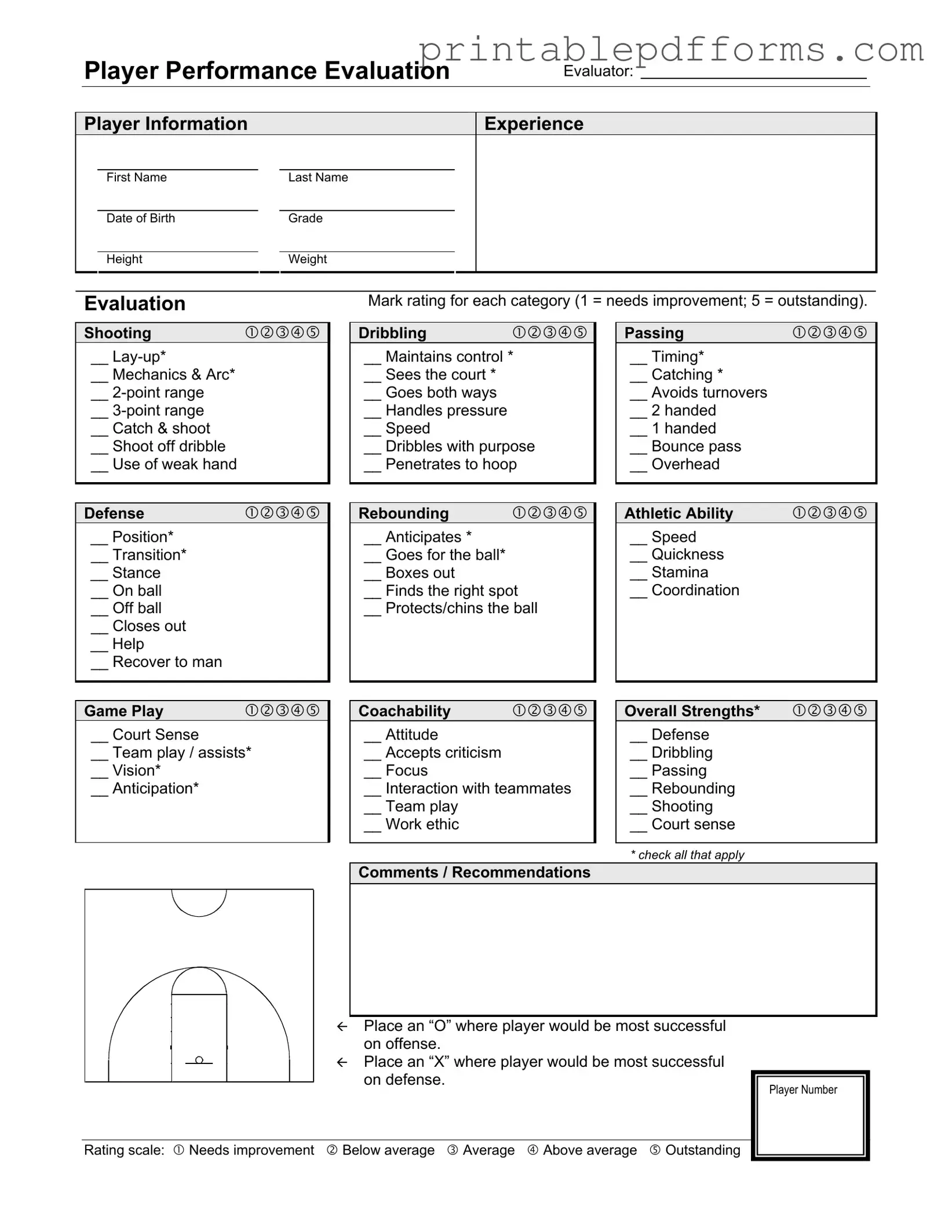The Basketball Evaluation Form is designed to assess a player's performance across various skills and attributes. Coaches and evaluators use this form to provide a comprehensive review of a player's strengths and areas for improvement. It helps in identifying a player's potential and guiding their development in the sport.
How should I fill out the evaluation ratings?
When filling out the evaluation ratings, you will use a scale from 1 to 5, where 1 indicates "needs improvement" and 5 signifies "outstanding." For each skill category, consider the player's performance and mark the appropriate score. This structured approach allows for a clear and standardized assessment of each player's abilities.
What categories are included in the evaluation?
The evaluation covers several key categories that reflect a player's overall performance:
-
Shooting
-
Defense
-
Dribbling
-
Rebounding
-
Passing
-
Athletic Ability
-
Game Play
-
Coachability
Each category contains specific skills that evaluators assess, providing a detailed picture of the player's capabilities.
What should I do if a player excels in multiple areas?
If a player shows exceptional skills across various areas, it is important to highlight these strengths in the evaluation. Use the "Overall Strengths" section to note the specific skills where the player excels, such as defense, shooting, or court sense. This feedback can help the player understand where they shine and encourage them to continue developing those skills.
In the comments section, aim to offer specific, actionable feedback. Instead of general statements, mention particular skills or behaviors that need improvement. For example, instead of saying, "needs to work on shooting," you might say, "focus on improving shooting mechanics to increase accuracy." This level of detail helps the player understand what they can do to improve.
The "O" and "X" symbols are used to indicate a player's strengths in offensive and defensive roles, respectively. Placing an "O" where a player would be most successful on offense highlights their offensive skills, while an "X" marks areas where they excel defensively. This visual cue helps coaches quickly identify where a player can contribute most effectively during games.
How often should evaluations be conducted?
Evaluations should be conducted regularly throughout the season, ideally after key games or practice sessions. Frequent evaluations allow for tracking progress and adjusting training focuses as needed. They also provide players with ongoing feedback, which is essential for their development and motivation.
Can parents access the evaluation results?
Typically, evaluation results are shared with the players and coaching staff. However, sharing with parents may depend on the team's policies. It is beneficial for parents to understand their child's strengths and areas for growth, so open communication about the evaluation process can enhance support for the player's development.

